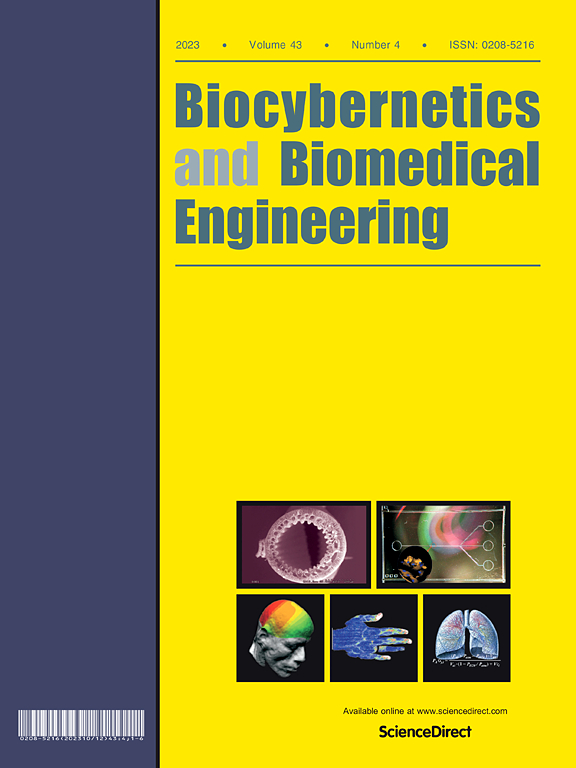Diffusion tensor imaging technique for studying brain microstructural changes in Parkinson’s disease patients
IF 6.6
2区 医学
Q1 ENGINEERING, BIOMEDICAL
引用次数: 0
Abstract
Diffusion tensor imaging (DTI) was used to observe degeneration processes at the microstructural and functional levels in the brains of patients with Parkinson’s disease (PD). Two tensor-based unscented Kalman filter (UKF) was used for analyses of eight regions: the substantia nigra, putamen, caudate nucleus, globus pallidus, primary motor cortex, preprimary motor cortex, supplementary motor area (SMA), presupplementary motor area (pre-SMA), and whole brain of patients with PD (n = 14) and controls (n = 12). We analyzed eight DTI metrics in the entire brain and eight brain regions separately for each hemisphere using univariate and multivariate statistical analysis and their correlation with the clinical parameters. The most affected brain regions in patients with PD were the substantia nigra, pre-SMA, globus pallidus, and caudate nucleus. These results suggest that DTI is an adequate tool for evaluating structural and functional alterations, including inflammation, reduced fiber length, changes in neurite density, axonal growth, demyelination, and axonal damage or loss, in the studied brain regions of patients with PD. The results also revealed a generalized brain degeneration process. In conclusion, DTI can be applied for in vivo studies of the degenerative process and could be considered a complementary method in future studies to improve the accuracy of PD diagnosis.
扩散张量成像技术研究帕金森病患者脑微结构变化
应用弥散张量成像(Diffusion tensor imaging, DTI)技术观察帕金森病(PD)患者大脑微结构和功能水平的退行性变过程。采用两个基于张量的unscented Kalman滤波(UKF)对PD患者(n = 14)和对照组(n = 12)的黑质、壳核、尾状核、苍白球、初级运动皮质、初级运动皮质、辅助运动区(SMA)、前辅助运动区(pre- supplementary motor area, SMA)和全脑8个区域进行分析。采用单因素和多因素统计分析,分析了全脑和脑半球8个脑区DTI指标与临床参数的相关性。PD患者受影响最大的脑区是黑质、sma前区、苍白球和尾状核。这些结果表明,DTI是评估PD患者脑区结构和功能改变的适当工具,包括炎症、纤维长度减少、神经突密度变化、轴突生长、脱髓鞘和轴突损伤或丢失。结果还揭示了一个广泛的脑变性过程。综上所述,DTI可以应用于PD退行性过程的体内研究,在未来的研究中可以作为一种补充方法来提高PD诊断的准确性。
本文章由计算机程序翻译,如有差异,请以英文原文为准。
求助全文
约1分钟内获得全文
求助全文
来源期刊

Biocybernetics and Biomedical Engineering
ENGINEERING, BIOMEDICAL-
CiteScore
16.50
自引率
6.20%
发文量
77
审稿时长
38 days
期刊介绍:
Biocybernetics and Biomedical Engineering is a quarterly journal, founded in 1981, devoted to publishing the results of original, innovative and creative research investigations in the field of Biocybernetics and biomedical engineering, which bridges mathematical, physical, chemical and engineering methods and technology to analyse physiological processes in living organisms as well as to develop methods, devices and systems used in biology and medicine, mainly in medical diagnosis, monitoring systems and therapy. The Journal''s mission is to advance scientific discovery into new or improved standards of care, and promotion a wide-ranging exchange between science and its application to humans.
 求助内容:
求助内容: 应助结果提醒方式:
应助结果提醒方式:


